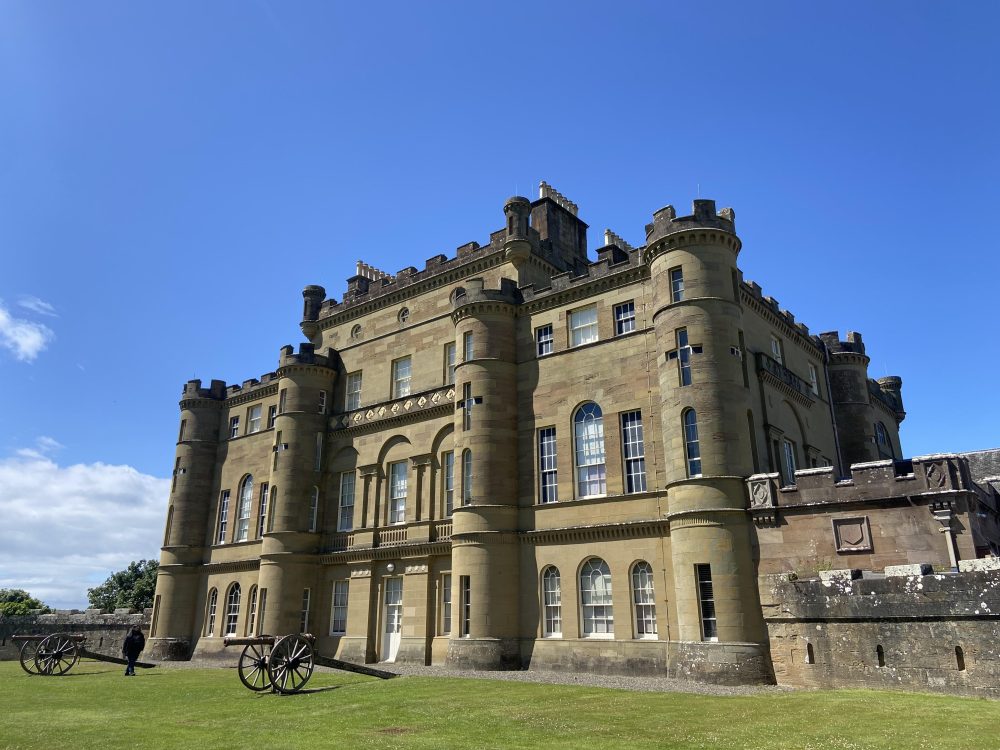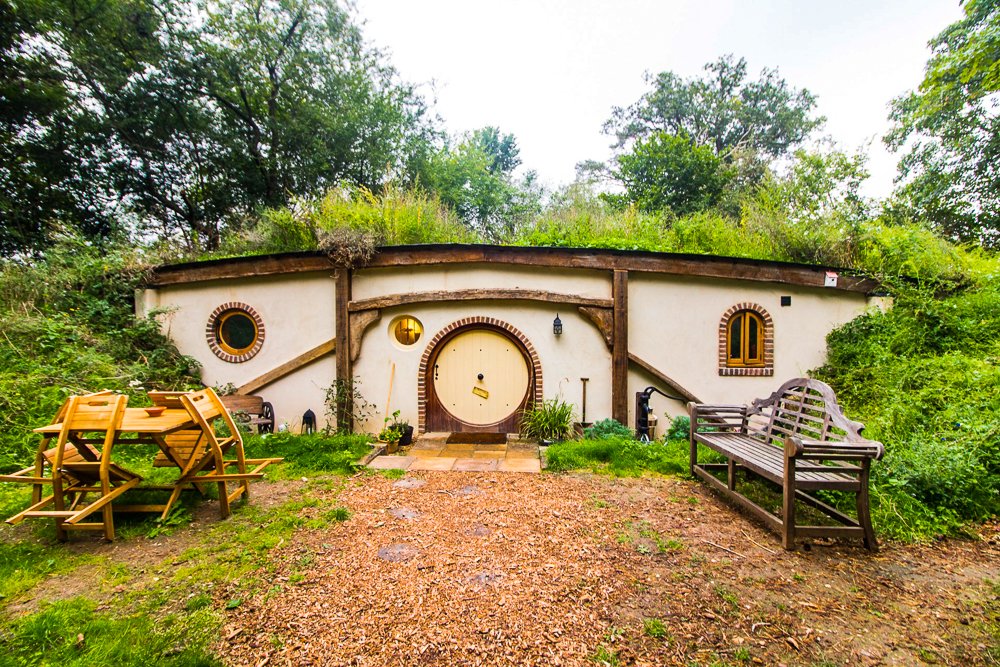Still standing two hundred years after Horace Walpole’s death, the gothic castle that the wildly eccentric author originally converted from two cottages stands to welcome guests to this day, thanks to a huge restoration project which took it from disrepair to its former glory.

A pastiche of Walpole’s absurd imagination and the gothic places he visited on his grand tour of Europe, Strawberry Hill House is a surprise and an eccentric gothic experience, comprised of themed rooms and careful fostering of artful, campy tones.
The Gothic Legacy of Horace Walpole
Anyone who enjoys gothic literature will have heard of Horace Walpole and The Castle of Otranto, widely considered to be the first ever supernatural and gothic novel.
While The Castle of Otranto is certainly a strange (and arguably silly) read by today’s standards, it undeniably set the groundwork for later works of iconic gothic literature, such as Matthew Lewis’s The Monk and The Mysteries of Udolpho by Ann Radcliffe.
Many of these works, including The Castle of Otranto, are also referenced in Jane Austen’s gothic parody, Northanger Abbey.
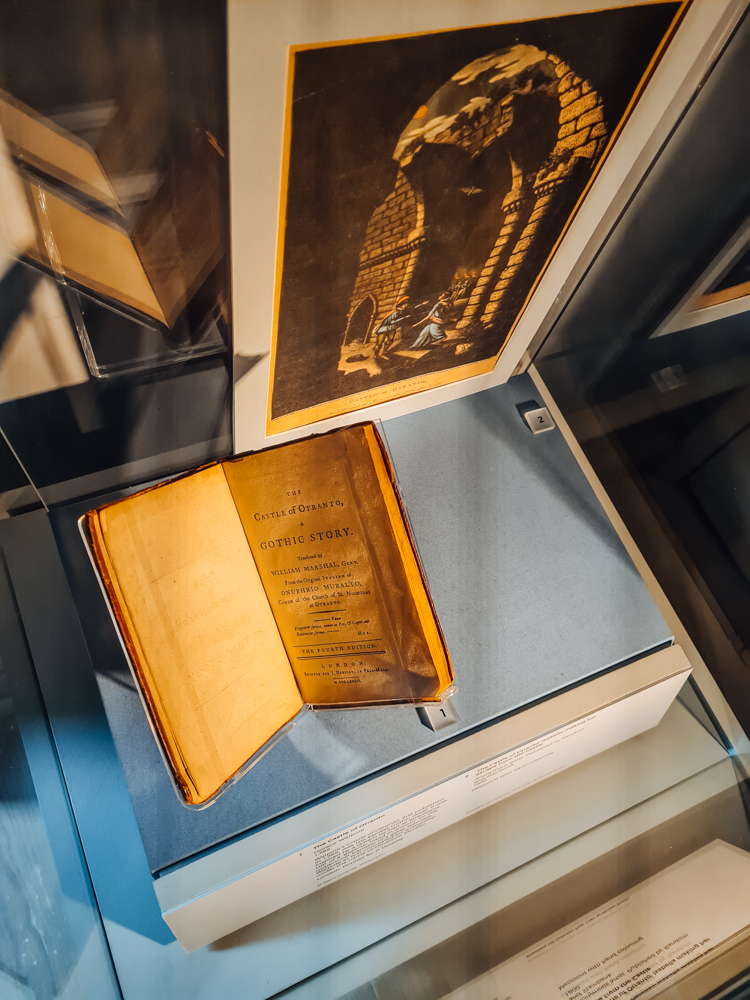
The story of The Castle of Otranto centres around Princess Isabella, whose young betrothed is suddenly crushed by a giant knight’s helmet. She must then escape before Manfred, her fiancé’s father and lord of the castle, divorces his current wife and forces Isabella to marry him instead.
By the time that he had the nightmare which inspired The Castle of Otranto, Walpole had already built, and was living at, Strawberry Hill House.
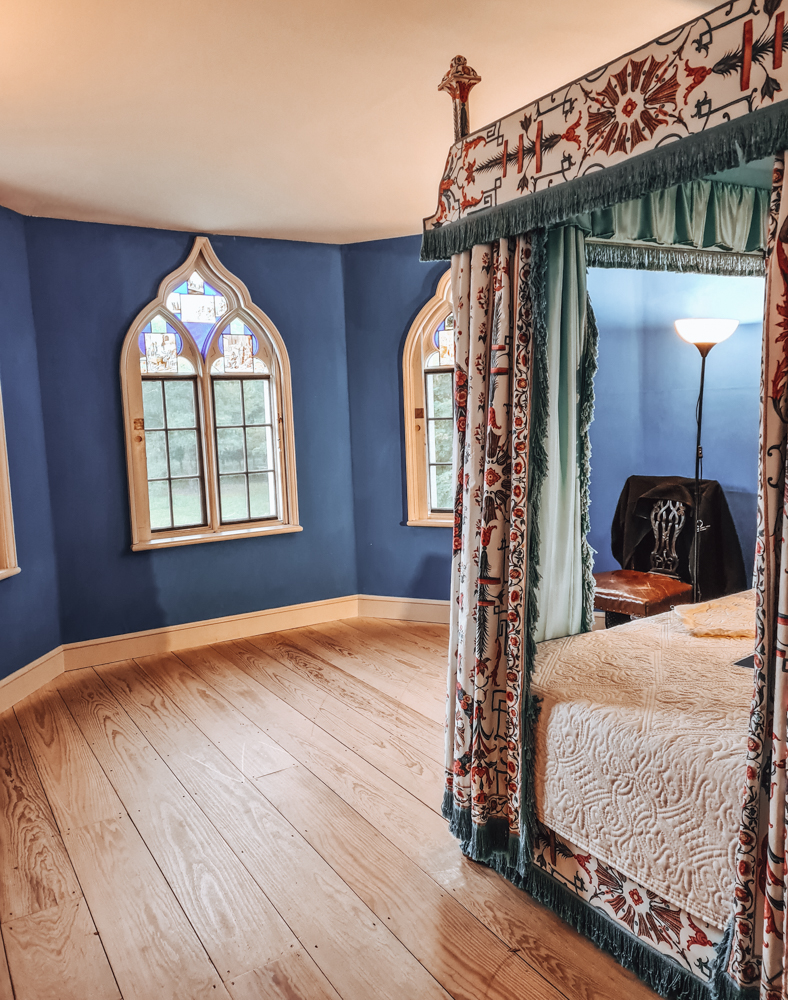
Son of the UK’s first prime minister, a close friend of the poet Thomas Gray — who accompanied Walpole on the Grand Tour — Walpole was a fascinating and strange individual outside of being a gothic writer, and that strangeness can certainly be seen and felt throughout Strawberry Hill House.
How to Get to Strawberry Hill House
Strawberry Hill House is open from Sunday to Thursday every week, and is easily accessed by public transport or car.

By Train: Strawberry Hill House can be easily accessed by train which runs on a circular route from London Waterloo to Strawberry Hill, with 4 trains per hour, Monday to Saturday, and 2 trains per hour on Sundays. The station is a 5-10 minutes’ walk from the house.
London Underground: Take the District Line westbound to Richmond. From there you can catch the R68 from bus stop Z towards Hampton Court and alight at Michelham Gardens.
By Car: Strawberry Hill House is easily accessed by car and has its own limited free parking next to the house. If the parking s full then there are a number of pay-and-display car parks in Twickenham town centre.
Tip: Strawberry Hill House is just a fifteen-minute drive (or bus) to Hampton Court if you’d like to do both places in one trip.
Strawberry Hill is also an Art Pass destination meaning your entry tickets will be half price if you have a membership. Art Pass get you a discount or free entry to hundreds of historic sites and art exhibitions across the UK.
Find out more and book tickets on their website.
The History of Strawberry Hill House — The Toy House by The Thames
“It’s a little plaything-house that I got out of Mrs Chenevix’s shop and is the prettiest bauble you ever saw’ – Horace Walpole, June 1747
This bauble was once two small attached cottages by the river in Twickenham, both of which Horace bought when he was thirty. Soon after, they had been transformed into one of the most influential buildings in English architecture.
Walpole set about turning the building, which had been known locally as Chopp’d Straw Hall, into Strawberry Hill House: his own personal Gothic castle. The house existed in huge contrast against the prevailing neoclassical style of its time period.
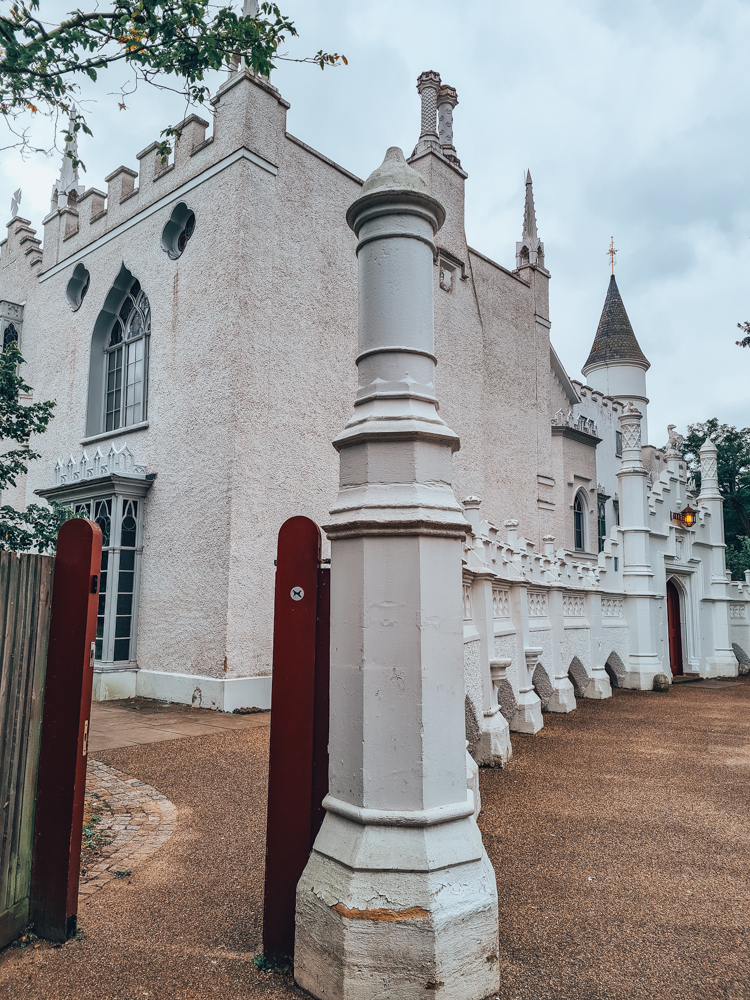
Not just localised to the house itself, this abstract gothic style extended to the garden where he rejected the idea of a traditional formal garden favouring a ‘poetical’ and fluid style.
Throughout the house and garden, he kept in mind ‘sharawaggi’, a Chinese word meaning ‘for want of symmetry’ which you can absolutely feel as you go through the house and just feel that lack of symmetry for yourself.
He also coined his own word for the aesthetic inside the house ‘gloomth’ conjuring gloomy yet cosy vibes which he achieved through clever angles, light play, and stained glass windows for colour.
After Walpole’s death, having no wife or children of his own the house started to move through the line of distant heirs and through marriage ended up in the hands of George the 7th Early of Waldegrave who was a drunk and often in trouble with the law.
He sold off all of Walpole’s gathered treasure which had angered the house the reputation as a ‘house of curiosities’ in what was called The Great Sale of 1842.
It was deemed one of the biggest sales of the century, with a huge marketing campaign behind it. The precious items were sold over thirty days on the lawn outside the house which was then left to become derelict.

No account of the history of the house would be complete with mentioned Lady Frances Waldegrave who had inherited the now derelict Strawberry Hill House and began work restoring and adapting it in 1846.
Her adaptions kept the spirit of the house but made it grander and loftier making extra rooms for guests and enjoyment.
Strawberry Hill House once again became one of the most famous houses in England but she lamented late in her life that Horace Walpole would get the credit for her improvements “Strawberry is more like a fairy palace than ever. (…) I now constantly find young people thinking that Horace Walpole made all my pet creations’.
What to Do at Strawberry Hill House
Note: You can download the Strawberry Hill House app and take a guided tour of the inside of the house for free before or during your visit to the property.
Take a glimpse of our trip to Strawberry Hill House on Instagram.
The Hall
The entrance and hall are the first point of entry and immediately set the scene for the rest of the house.
Walpole himself described this as ‘the most particular and chief beauty of the Castle’ and that’s immediately obvious when seeing the arched doorways, the traced wallpaper modelled after the tomb of Prince Arthur in Worcester Cathedral, and the grand staircase designed by Richard Bentley in 1753 and based on the staircase at Rouen Cathedral.
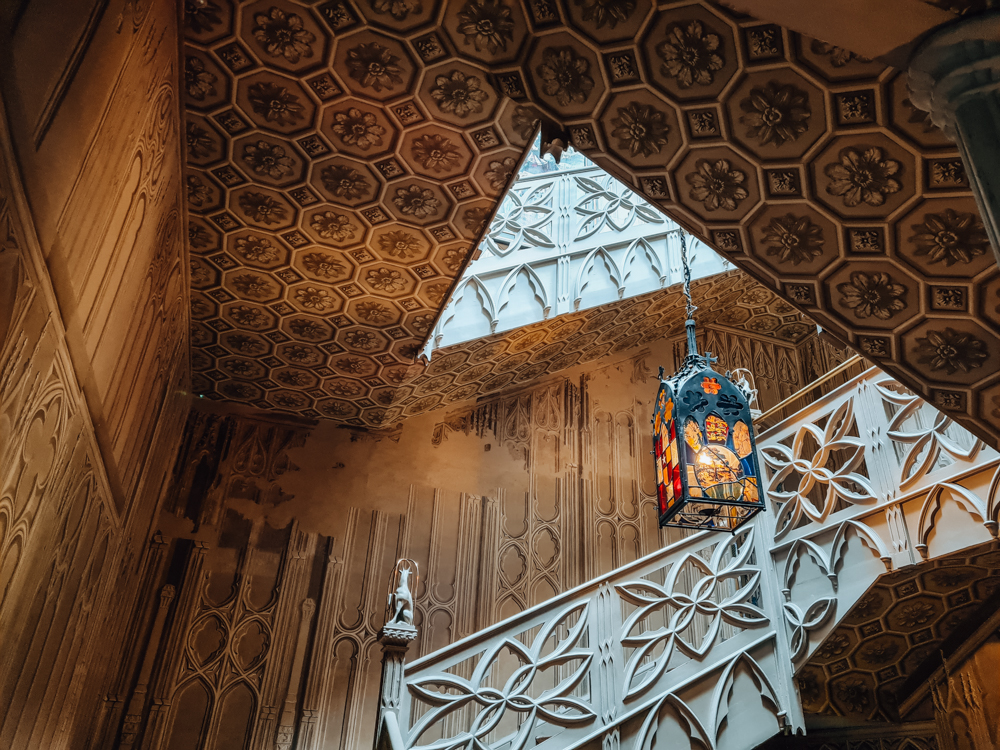
Perhaps most striking is the colourful replica of Bentley’s ‘lanthorn’ hanging down into the hall.
The Great Parlour
This is one of the first and larger extensions that Walpole added to the original building; it was used for entertaining large parties and displays the portraits of family and friends. In here you can see large portraits of Walpole’s three nieces and his parents as well as a first edition of The Castle of Otranto on display.
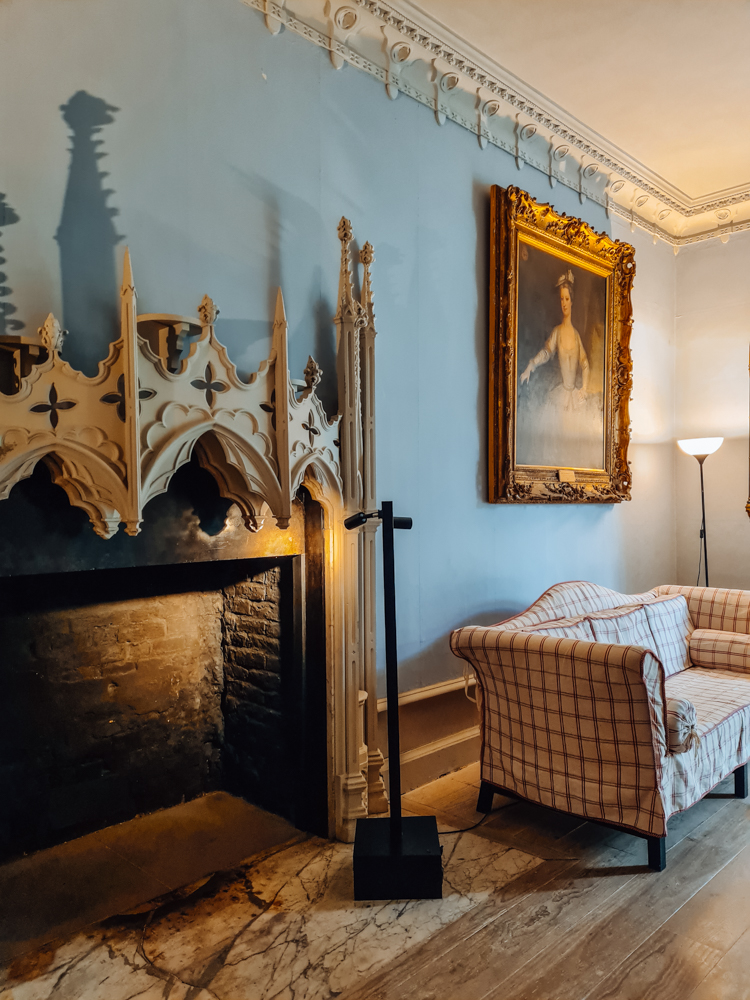
The Library
Perhaps the most awe-inspiring part of the house, particularly for bookworms such as ourselves, is the library. White bookcases pierced gothic arches, that opens on a hinge to easily reach the books hidden behind the tip of the arch, enclose the room and are modelled on the door in St Paul’s Cathedral.
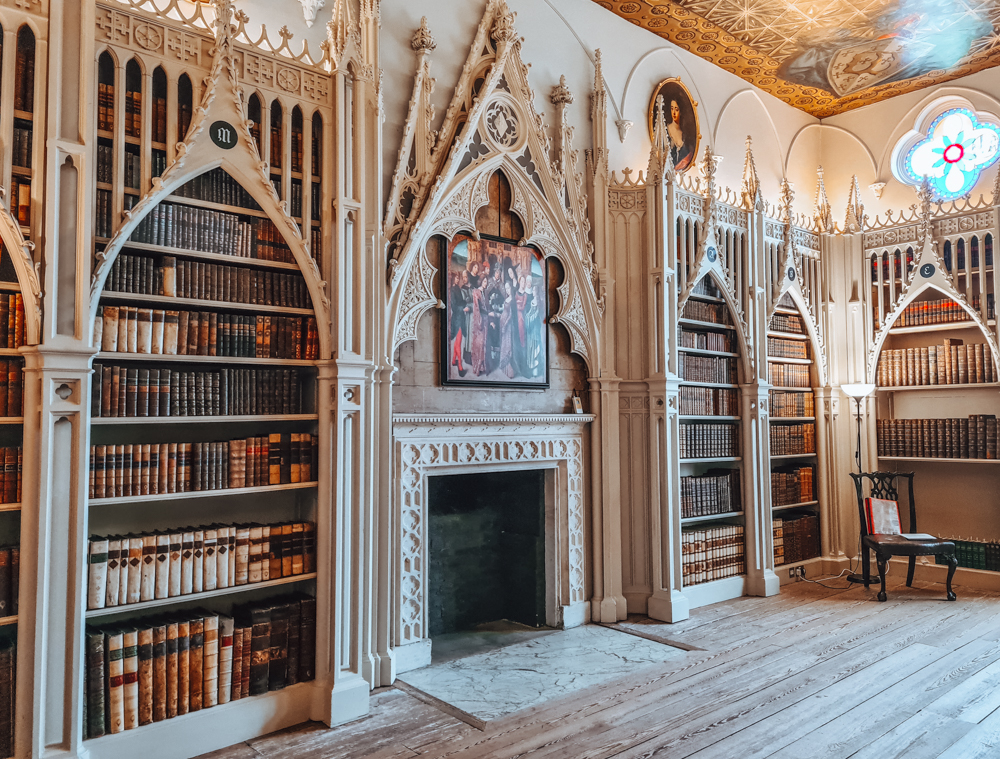
The ceiling was designed by Walpole and follows a crusades theme which you can trace throughout the house. This room was kept deliberately sparse when Walpole lived here as he regarded it as a place of study.
The Holbein Chamber
So named after the famous artist Han Holbein as tracings of Hans Holbein’s Portraits of the members of Henry VIIIs court on oil paper by George Vertue hang in the room.
Given a Tudor theme and decorated in purple, one of the most impressive items in the room, aside from the portraits, is Bentley’s screen which is based on the one at Rouen Cathedral which was burnt down the eighteenth century making this a fine preservation of art that would otherwise have been lost.

Likewise, the papier-mâché ceiling was copied from the Queen’s Dressing Room at Windsor Castle which has also been lost. The impressive chimney which is (also by Bentley) is based on the tomb of Archbishop Warham at Canterbury.
The Gallery
Nothing so far compares to the splendour and grandeur of The Gallery, commented on by Walpole himself when he wrote that:
“I begin to be ashamed of my own magnificence; Strawberry is growing sumptuous; it will scarce be any longer like the fruit of its name or the modesty of its ancient demeanour”
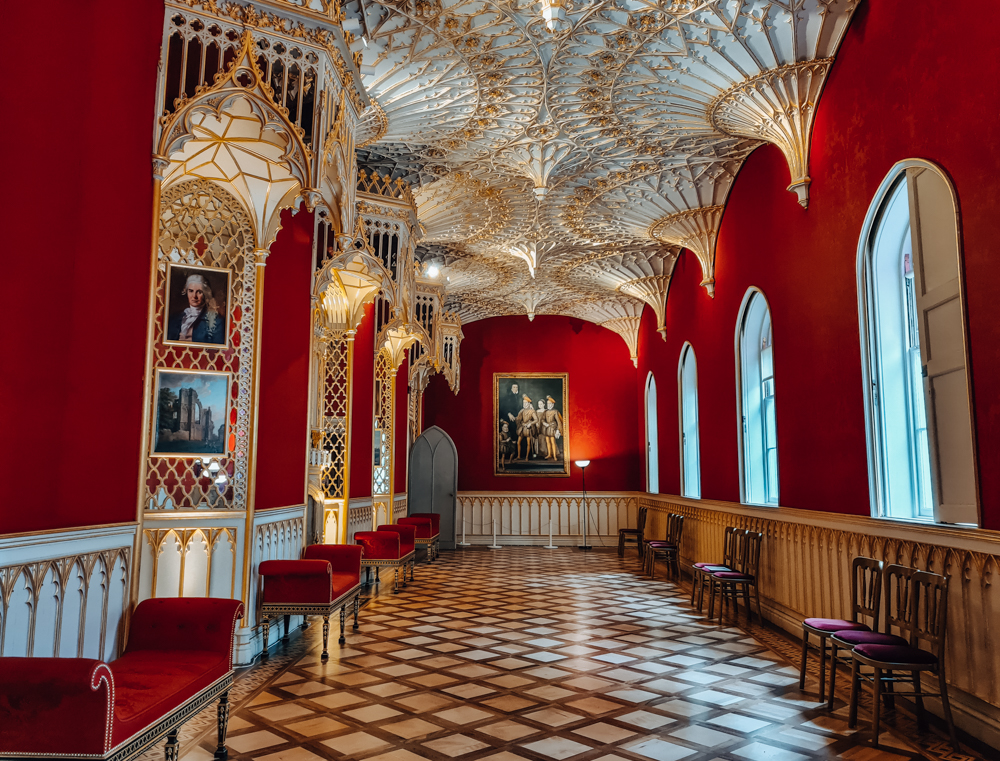
Walpole blamed his acquisitions and growing art collection which was displayed around the house and primarily in the gallery. It is an opulent red and gold hall featuring a fan-vaulted ceiling based on the side aisle of Henry VII’s Chapel of Westminster Abbey and overall inspired by the historic French chateau of Chantilly.
The Round Drawing Room
Leading on from the gallery is the cosy Round Drawing Room which immediately draws your eye to the stained glass bay window featuring various kings through history which was an addition by Lady Waldegrave.

The grand fireplace based on Edward the Confessor’s tomb at Westminster Abbey was created and improved by Robert Adam who was one of the last architects to work on the house.
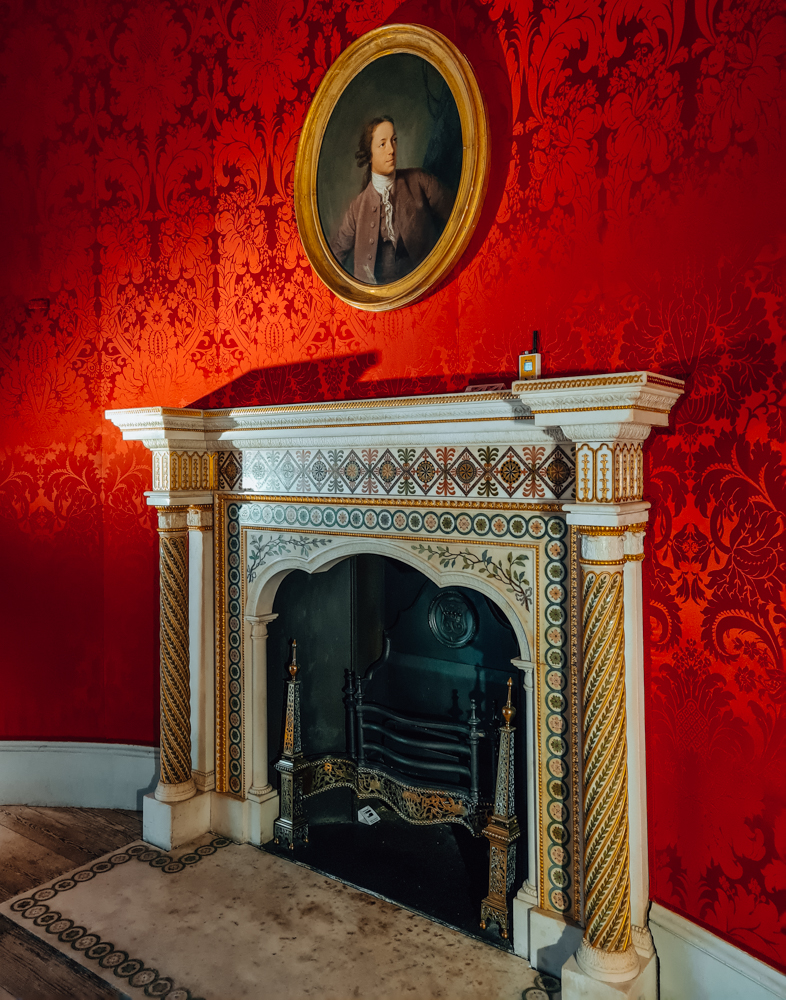
The Tribune
The stunning tribune which could only be viewed from behind a screen during Wlapole’s day is named after the room at Uffizi Palace in Florence and where Walpole kept the most treasured items of his vast collection. Decked in blue and gold with more impressive stained glass, this is once again pure opulence.
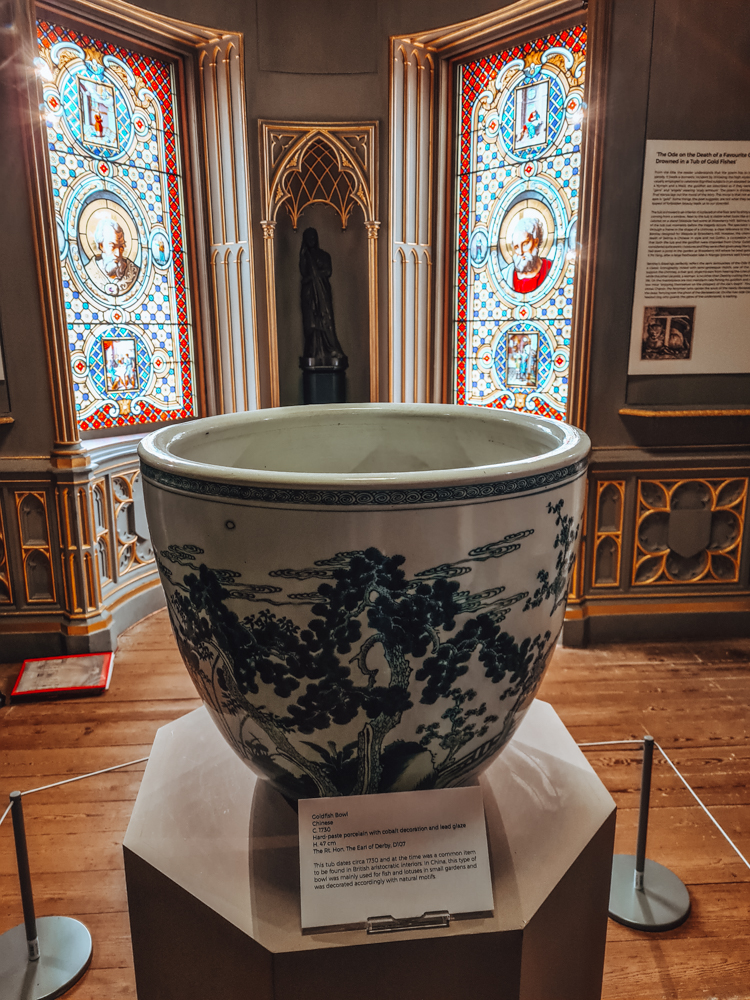
In this room you will also see the famous vase where one of Walpolew’s pets met a tragic end by drowning as eulogized in his friend (and almost certainly lover) Thomas Gray’s famous poem Ode on the death of a favourite cat:
Presumptuous maid! with looks intent
Again she stretched, again she bent,
Nor knew the gulf between.
(Malignant Fate sat by and smiled)
The slippery verge her feet beguiled,
She tumbled headlong in.
The poem was also illustrated by William Wordsworth, work which you can also see in Strawberry Hill House.

Visit the Strawberry Hill House Shop and Cafe
You’ll finish your tour of the house in the gift shop where you’ll find copies of The Castle of Otranto and other relevant souvenirs, local products, and garden items. There’s also a book swap outside if you want to take along anything.
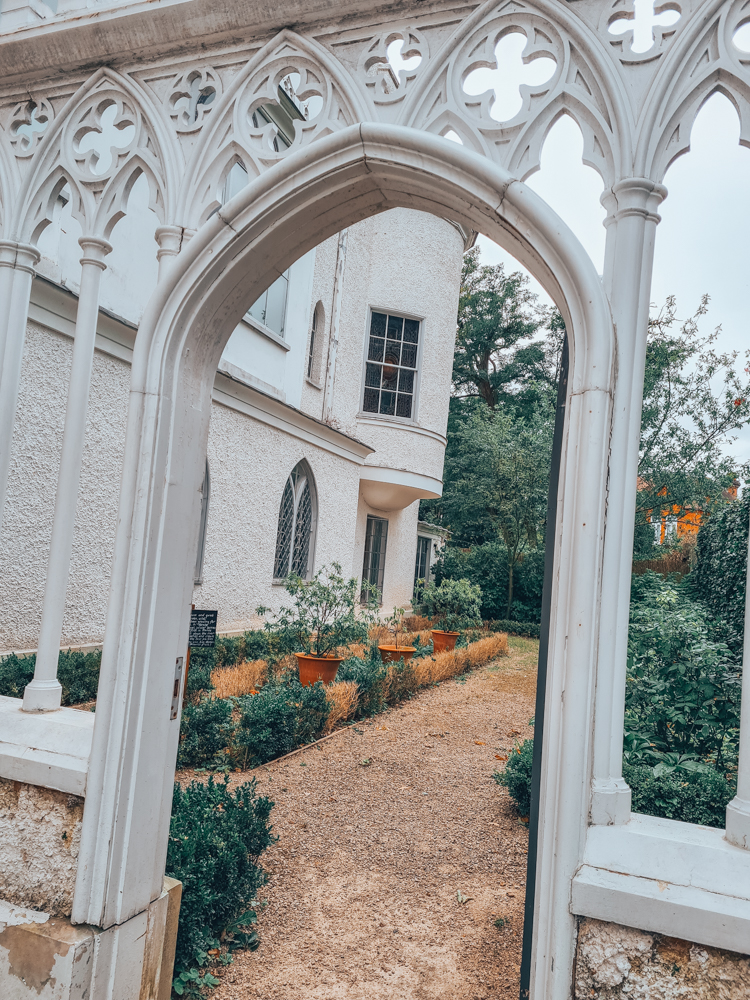
The award-winning cafe is also a must-visit and wonderful way to extend your visit and look out over the garden. Focusing on using seasonal and local produce they serve a wide range of sandwiches, paninis, light bites and cakes as well as full drinks menu.


